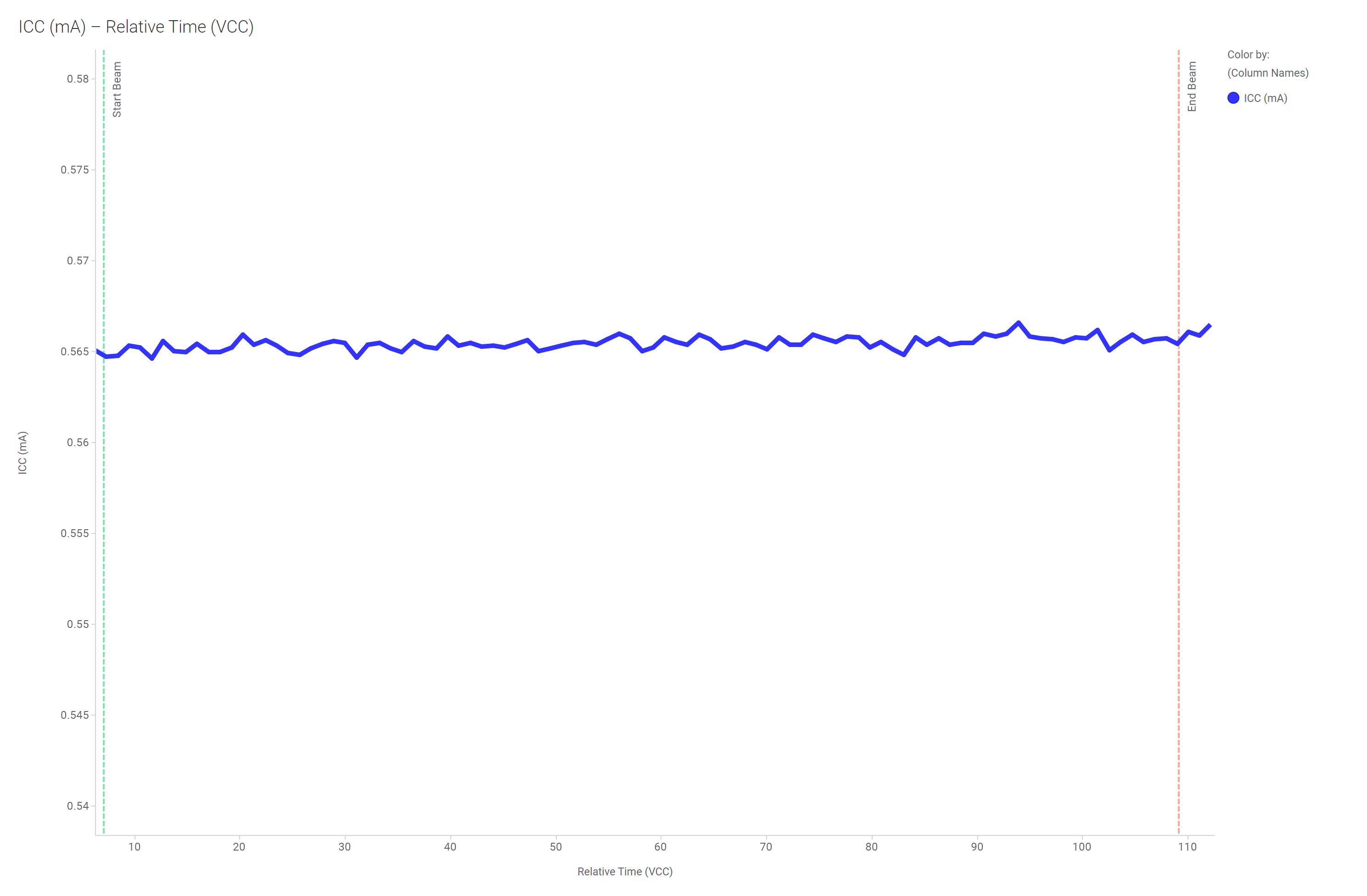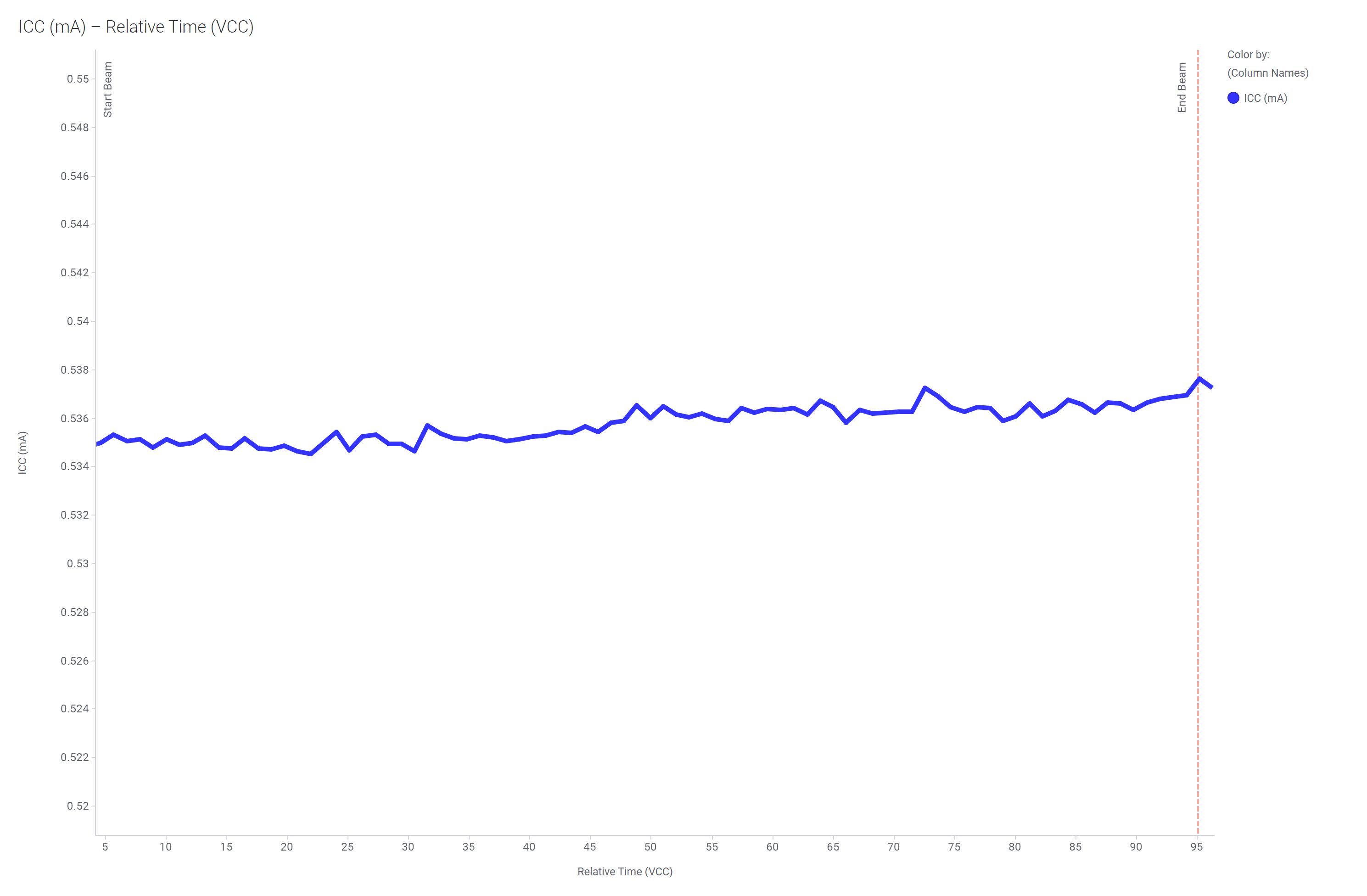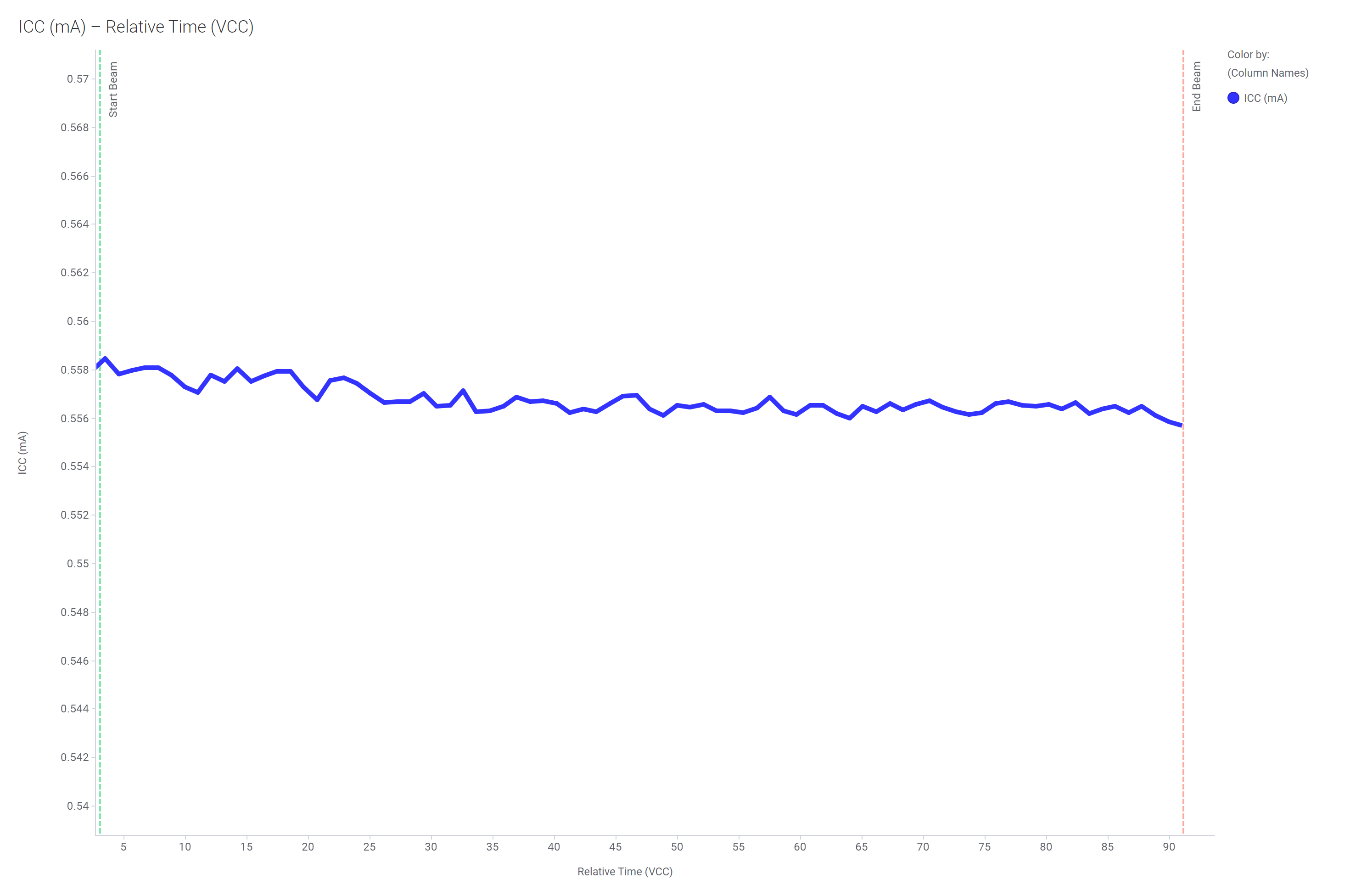SBOK085 April 2024 SN54SC2T74-SEP
PRODUCTION DATA
5.1 SEL Results
During SEL characterization, the device was heated using forced hot air, maintaining device temperature at 125°C. A FLIR (FLIR ONE Pro LT) thermal camera was used to validate die temperature to make sure the device was accurately heated (see SN54SC2T74-SEP Thermal Image for SEL.) The species used for SEL testing was a Silver (109Ag) ion at 15MeV / µ with an angle-of-incidence of 0° for an LETEFF of 43MeV-cm2/ mg. A fluence of approximately 1 × 107 ions / cm2 was used for the runs.
The three devices were powered up and exposed to the heavy-ions using the maximum recommended supply voltage of 5.5V using a National Instruments™ PXI Chassis PXIe-4139 and a 5V, 1MHz square wave input using a Tektronix® AFG3102 function generator. The run duration to achieve this fluence was approximately 90 seconds. As listed in Table 5-2, no SEL events were observed during the nine runs, indicating that the SN54SC2T74-SEP is SEL-free. Figure 5-1, Figure 5-2, and Figure 5-3 show the plots of current versus time for runs one, four, and seven, respectively.
| Run Number | Unit Number | Distance (mm) | Temperature (°C) | Ion | Angle | Flux (ions × cm2 / mg) | Fluence (Number of ions) | LETEFF (MeV × cm2/mg) | Did an SEL event occur? |
|---|---|---|---|---|---|---|---|---|---|
| 1 | 1 | 40 | 124 | Ag | 0° | 1.00E+05 | 1.00E+07 | 43 | No |
| 2 | 1 | 40 | 124 | Ag | 0° | 1.00E+05 | 1.00E+07 | 43 | No |
| 3 | 1 | 40 | 124 | Ag | 0° | 1.00E+05 | 1.00E+07 | 43 | No |
| 4 | 2 | 40 | 123 | Ag | 0° | 1.00E+05 | 1.00E+07 | 43 | No |
| 5 | 2 | 40 | 123 | Ag | 0° | 1.00E+05 | 1.00E+07 | 43 | No |
| 6 | 2 | 40 | 123 | Ag | 0° | 1.00E+05 | 1.00E+07 | 43 | No |
| 7 | 3 | 40 | 124 | Ag | 0° | 1.00E+05 | 1.00E+07 | 43 | No |
| 8 | 3 | 40 | 124 | Ag | 0° | 1.00E+05 | 1.00E+07 | 43 | No |
| 9 | 3 | 40 | 124 | Ag | 0° | 1.00E+05 | 1.00E+07 | 43 | No |
 Figure 5-1 Current versus Time for Run 1 of the SN54SC2T74-SEP at T = 125°C
Figure 5-1 Current versus Time for Run 1 of the SN54SC2T74-SEP at T = 125°C Figure 5-2 Current versus Time for Run 4 of the SN54SC2T74-SEP at T = 125°C
Figure 5-2 Current versus Time for Run 4 of the SN54SC2T74-SEP at T = 125°C Figure 5-3 Current versus Time for Run 7 of the SN54SC2T74-SEP at T = 125°C
Figure 5-3 Current versus Time for Run 7 of the SN54SC2T74-SEP at T = 125°CNo SEL events were observed, indicating that the SN54SC2T74-SEP is SEL-immune at LETEFF = 43MeV-cm2 / mg and T = 125°C. Using the MFTF method shown in Single-Event Effects (SEE) Confidence Internal Calculations , the upper-bound cross-section (using a 95% confidence level) is calculated as: